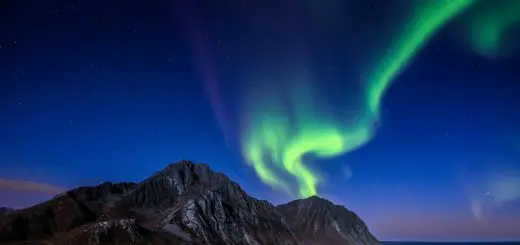Shamanic Dance: Sacred Movement for Spiritual Connection

Looking for more amazing products? Check out our online store and explore our collection here! Happy shopping!
Before diving in, please note: This post is for informational purposes only. If you’d like to know more about how we approach topics, feel free to check out our friendly Disclaimer Page.
Hey there, amazing readers! 
We’re committed to delivering quality posts, and your support (even just sticking around despite the ads) means everything to us. So, bear with us, and thanks for helping us keep the good vibes rolling. Now, on to the fun stuff!
TRANSLATE BUTTON AT THE END OF THE ARTICLE
Overview
Shamanic dance is a sacred movement practice that has been used by indigenous cultures for centuries to connect with the spiritual realm.
It involves rhythmic movements, specific postures, and gestures that help individuals enter an altered state of consciousness and communicate with the divine.
This article will explore the origins and history of shamanic dance, its role in indigenous cultures, how it facilitates spiritual connection, the power of rhythm and movement, rituals and ceremonies involved in shamanic dance practices, techniques used in this form of dance, and the benefits it offers for physical and mental health.
We will also discuss how shamanic dance can be a pathway to self-discovery and inner healing, and provide guidance on incorporating it into your spiritual practice, as well as finding a shamanic dance community or teacher.
What is Shamanic Dance?
Shamanic dance can be defined as a form of movement that is used to enter altered states of consciousness and connect with the spirit world.
It involves specific steps, postures, and gestures that are believed to facilitate communication with spirits, ancestors, and other non-physical beings.
Shamanic dance is often performed in a ritualistic setting, accompanied by rhythmic drumming or other musical instruments to enhance the spiritual experience.
The Origins and History of Shamanic Dance
The origins of shamanic dance can be traced back to the ancient cultures of Siberia, Central Asia, and the Americas.
It is believed to have emerged as a way for shamans, spiritual leaders and healers, to communicate with the spirit world and gain guidance and healing for their communities.
Shamanic dance has been practiced for thousands of years and has evolved in different ways across various indigenous cultures.
The Role of Shamanic Dance in Indigenous Cultures
Shamanic dance plays a significant role in indigenous cultures around the world.
It is often performed during religious ceremonies, healing rituals, and important life events such as initiation rites and harvest celebrations.
In these cultures, shamanic dance is viewed as a form of spiritual expression and a means of connecting with divine forces.
It is believed that through the dance, individuals can access higher realms of consciousness, receive messages from spirits, and bring about healing and balance to themselves and their communities.
How Shamanic Dance Facilitates Spiritual Connection
Shamanic dance facilitates spiritual connection by creating an altered state of consciousness in which individuals can access the spiritual realm.
The rhythmic movements, combined with focused intention and deep breathing, help quiet the mind and open the channels of communication with the divine.
Through the dance, individuals can transcend the limitations of ordinary reality and enter into a heightened state of awareness where they can commune with spirits, receive guidance, and experience spiritual transformation.
The Power of Rhythm and Movement in Shamanic Dance
Rhythm and movement are vital components of shamanic dance.
The repetitive beats of drums or other musical instruments serve as a powerful tool for altering consciousness and inducing trance-like states.
The consistent rhythm helps entrain the brainwaves, allowing dancers to enter deeper levels of consciousness and tap into spiritual energies.
The movements, postures, and gestures performed during shamanic dance are believed to have symbolic meanings and serve as a language through which communication with the spirit world takes place.
Rituals and Ceremonies in Shamanic Dance Practices
Shamanic dance is often performed within the context of rituals and ceremonies.
These rituals create a sacred space and set the intention for the dance.
They may involve purification ceremonies, the use of sacred objects, and the invocation of spiritual beings.
Shamanic dance ceremonies can be communal or individual, depending on the cultural context and purpose.
The rituals and ceremonies associated with shamanic dance help create a container for the spiritual experience and ensure that the dance is conducted in a safe and supportive environment.
Shamanic Dance Techniques: Steps, Postures, and Gestures
Shamanic dance techniques encompass a variety of steps, postures, and gestures that are specific to different cultures and traditions.
These techniques are often passed down through generations and are considered sacred knowledge.
Common elements include rhythmic footwork, swaying movements, spinning, and specific hand and arm gestures.
These movements are believed to align the body, mind, and spirit, and enable dancers to enter into a trance-like state and establish a connection with the spiritual realm.
The Benefits of Shamanic Dance for Physical and Mental Health
Shamanic dance offers numerous benefits for physical and mental health.
The rhythmic movements and physical exertion involved in the dance can help release tension, improve circulation, and increase flexibility and strength.
The deep breathing and focused attention during the dance promote mindfulness and can reduce stress and anxiety.
Shamanic dance also provides an opportunity for emotional release and catharsis, allowing individuals to process and heal emotional wounds.
Furthermore, the spiritual connection experienced during shamanic dance can provide a sense of purpose, meaning, and inner peace.
Shamanic Dance: A Pathway to Self-Discovery and Inner Healing
Shamanic dance can be a powerful pathway to self-discovery and inner healing.
By entering altered states of consciousness and connecting with spiritual energies, individuals can gain insight into their own lives, desires, and purpose.
Shamanic dance can help individuals release limiting beliefs, patterns, and blockages that may be holding them back from living a fulfilling life.
It can also provide a space for individuals to explore and heal past traumas, reconnect with their authentic selves, and cultivate a deeper sense of self-love and acceptance.
How to Incorporate Shamanic Dance into Your Spiritual Practice
If you are interested in incorporating shamanic dance into your spiritual practice, there are several ways to do so.
First, educate yourself about the cultural and historical context of shamanic dance to ensure respectful engagement with the practice.
Find resources, books, or workshops that teach shamanic dance techniques and rituals.
Create a dedicated space in your home or outdoors where you can practice the dance.
Set aside time regularly to engage in shamanic dance as a form of spiritual connection and self-expression.
Remember to approach the practice with reverence, intention, and an open heart.
Finding a Shamanic Dance Community or Teacher
Finding a shamanic dance community or teacher can greatly enhance your experience with this practice.
Look for local spiritual or holistic centers that may offer classes or workshops on shamanic dance.
Connect with like-minded individuals or organizations that focus on indigenous spirituality or shamanic practices.
Attend retreats or gatherings that include shamanic dance as part of their programming.
Online platforms and social media groups can also provide a way to connect with others interested in shamanic dance.
Remember to approach teachers and communities with respect and humility, honoring the traditions and wisdom they embody.
Conclusion
Shamanic dance is a sacred movement practice that offers a pathway to spiritual connection, self-discovery, and inner healing.
Its origins can be traced back to ancient cultures across the world, where it was used by shamans to communicate with the spirit world.
Shamanic dance involves specific steps, postures, and gestures that facilitate altered states of consciousness and enable individuals to receive messages from spirits.
The power of rhythm and movement, combined with rituals and ceremonies, create a container for the spiritual experience.
Shamanic dance offers numerous physical and mental health benefits and can be incorporated into one’s spiritual practice through education, personal dedication, and finding a supportive community or teacher.
By engaging in shamanic dance, individuals can embark on a transformative journey of self-exploration and spiritual growth.

The Enlightenment Journey is a remarkable collection of writings authored by a distinguished group of experts in the fields of spirituality, new age, and esoteric knowledge.
This anthology features a diverse assembly of well-experienced authors who bring their profound insights and credible perspectives to the forefront.
Each contributor possesses a wealth of knowledge and wisdom, making them authorities in their respective domains.
Together, they offer readers a transformative journey into the realms of spiritual growth, self-discovery, and esoteric enlightenment.
The Enlightenment Journey is a testament to the collective expertise of these luminaries, providing readers with a rich tapestry of ideas and information to illuminate their spiritual path.
Our Diverse Expertise
While our primary focus is on spirituality and esotericism, we are equally passionate about exploring a wide range of other topics and niches 

To ensure we provide the most accurate and valuable insights, we collaborate with trusted experts in their respective domains 
Our blog originally focused on spirituality and metaphysics, but we’ve since expanded to cover a wide range of niches. Don’t worry—we continue to publish a lot of articles on spirituality! Frequently visit our blog to explore our diverse content and stay tuned for more insightful reads.
Hey there, amazing reader! 
Check out our store here and take a peek at some of our featured products below! Thanks for being awesome!












